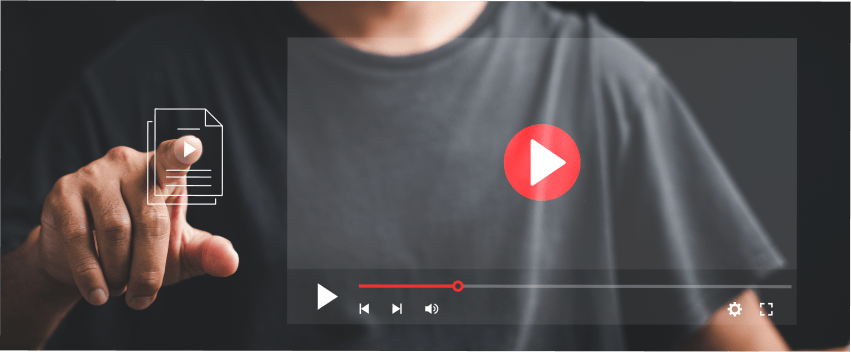Digital Transformation Consulting: Cost, Strategy,...
October 13, 2025

Designing a YouTube Video Summarizer is a cutting-edge step in consuming YouTube materials since it will reduce the time needed to acquire the main arguments from rather long videos. Before the LLMs, and especially with the aid of these new tools like Gradio, this process is simpler and easier to perform.
Here in this blog, let’s discuss how to use these sophisticated technologies to create a strong YouTube video summarizer. Regardless of whether you are a software developer who wants to add value to a customer’s experience, or an artificial intelligence enthusiast interested in semi-supervised learning, this guide will give you a blueprint for building a summarization tool, that is both functional and efficient.
Video summarization fills the need to shorten these very long videos into smaller clips that are easier to understand. It also helps in increasing the flow of information as well as the time taken to locate the same information.
In traditional methods of video summarization such as extractive summarization, the focus is made on choosing the segments out of the video. Albeit these methods can be somewhat effective to a certain degree in terms of analysis and production, they rarely work in harmony and do not allow us to get a complete and clear picture of the material.
LLMs are large artificial intelligence-driven language models that are capable of generating text, using natural language processing on the available data. Current models like GPT4 and other similar models like Falconsai/text_summarization are capable of producing good and human-like text that flows naturally with good context. (self-supervised), which makes them suitable for abstractive summarization because they employ state-of-the-art natural language processing (NLP) algorithms to analyze and synthesize text.
Different from extractive approaches that involve the creation of summaries through the selection of some portions of a given text, abstractive summarization produces new summaries created out of a summary writer’s analysis of the content of the text.
Also Read: Voice into Music: AI Composition with Python Magenta
Since that is the goal of this text summarization tool it is essential to create an easy-to-use and friendly interface. But for interactive web applications for machine learning models, Gradio is quite good. It also makes the generation and deployment of interfaces easier, such that a user has to feed it a YouTube URL and get a summarized text output with relative ease.
This blog is going to illustrate the entire process or workflow of developing a YouTube video summarizer. For the first part, we are going to obtain the text of the videos with the help of the youtube_transcript_api. Next, the transcript text is processed to make the text clean and ready for the summarization process.
With the help of the Falconsai/text_summarization model, the following transcripts will be edited, yielding brief descriptions. Last, we will deploy the model through Gradio to provide users with a feature that can let them type in the web address of the YouTube video and instantly get the summary of the content.
At the end of this tutorial, you will have a very efficient tool to perform summarization of YouTube videos. This tool uses the newest achievements in NLP and offers a pretty realistic approach to handling the problem of information abundance on YouTube. In that context, regardless of whether the software created during this project will be used for personal purposes or as a starting point for more complex programs, the collaboration between LLMs and interfaces is nothing short of marvelous.
Here, we define a list of the dependencies that shall be used to avoid failure in the application of this project. Create requirements. txt file and include the following: txt file and include the following:
This file can be used to install all necessary packages by running:
Video summarization is a process where long video material is compressed into a shorter version that contains all the important aspects. There are two primary types:
Engines such as GPT-4 can generate human-like text, making them useful for abstractive summarization. They understand the context and can produce summaries that are concise and coherent.
To obtain the transcript of a YouTube video, the video ID is required. This ID is extracted using a regex pattern from various YouTube URL formats.
Using the youtube_transcript_api, the transcript for the video is fetched.
With the transcript ready, the “Falconsai/text_summarization” model is used to generate a summary.
Combining transcript fetching and summarization functions to create a seamless workflow.
Gradio is an excellent tool for creating web interfaces for machine learning models. It allows us to build interactive interfaces easily.
Using Gradio to create an interface where users can input a YouTube URL and get a summarized text.
Introducing the foundational components of a YouTube video summarizing system step-by-step, from video transcript retrieval to summarization using LLMs, and ending with building the front end with Gradio. This project not only demonstrates the application of modern AI in text processing but also offers a practical solution for making content consumption more efficient. Future enhancements could include handling multiple languages and improving the accuracy of the summaries.
For more innovative solutions and expert guidance on AI and machine learning, visit Inexture Solutions.